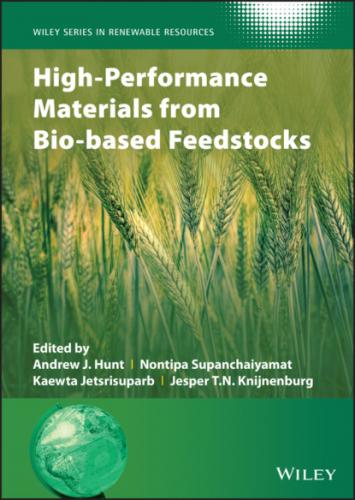Table 2.2 Chemical components in various wood categories [13–18].
| Feedstock | Contents (%) | |||
|---|---|---|---|---|
| Cellulose | Hemicellulose | Lignin | Others | |
| Pine | 46.90 | 20.30 | 27.30 | 5.50 |
| Fir | 45.00 | 22.00 | 30.00 | 3.00 |
| Aspen | 47.14 | 19.64 | 22.11 | 11.11 |
| Beech | 46.40 | 31.70 | 21.90 | 0.00 |
| Japanese cedar | 38.60 | 23.10 | 33.80 | 4.50 |
| Eucalyptus | 34.70 | 27.30 | 35.80 | 2.20 |
2.2.2 Agricultural Residues
Agricultural residues are cellulosic materials that are discarded from agricultural or agro‐industrial processes. Much literature has reported the production of carbon‐based materials from several kinds of agricultural residues, of which rice husks and rice straw are the most extensively used [26, 27]. Rice husk contains 37.00% cellulose, 23.43% hemicellulose, and 24.77% lignin, while rice straw contains 34.53% cellulose, 18.42% hemicellulose, and 20.22% lignin [25]. The rice husks and rice straw had a lower hardness than wood because the total amounts of cellulose and lignin present in rice husks and rice straw were lower than 70%. After thermal treatment, the carbon material obtained from rice husks and rice straw were powders with low hardness [28]. Additionally, the rice husks and rice straw still had a substantial total carbon and fixed carbon content. When comparing rice husks to rice straw, the carbon content was 41.92% and 36.07%, with a fixed carbon content of 11.44% and 6.93%, respectively [29]. The rice husks were probably a more suitable feedstock for the production of carbonaceous material.
Many works also refer to the potential of biomass stones and shells for the production of carbonaceous materials [30, 31]. Olive stone was converted into a bio‐based carbon material, with a carbon content of 47.50% and fixed carbon of 13.80% [32]. Another effective feedstock, peanut shell, possessed a high carbon content of 52.73% and fixed carbon of 22.60% [33]. Carbonized peanut shells at 500 °C resulted in a biochar with little ash and volatile matter. Cocopeat presented a high carbon content of 61.57% and fixed carbon of 25.30% [34]. The cocopeat that was pyrolyzed at 500 °C generated a biochar containing up to 84.44% carbon content with up to 67.25% fixed carbon. However, it contained volatile matter of about 14.30%, volatile matter of about 14.30%, moisture 2.55% and ash 15.90%. Only temperatures over 800 °C can produce pure fixed carbon without any volatile matter. In European countries, a great deal of research is done on the utilization of walnut shells (45.10% carbon and 15.90% fixed carbon) and almond shells (50.50% total carbon and 9.10% fixed carbon) for the production of hard biochars with high yield [35]. In Southeast Asia, palm kernel shells (50.49% carbon) and coconut shells (49.20% carbon), which are local plants, have been converted into carbonaceous materials in the industry [28].
The thermochemical conversion of petioles, leaves, branches, leaflets, and stalk from various plants has also been studied. These feedstocks have a moderate carbon content, low lignin, and fixed carbon that affect the hardness and yield of biochar [36]. Although both date palm leaflets and tobacco stalks (the biomass waste after tobacco harvesting) had a carbon content of up to 50%, the produced biochars were rather fragile [37, 38]. These feedstocks may thus not be applicable to produce carbon material for catalysis, but can be used as additives for soil improvement. Camphor leaves and camellia leaves contained a carbon content of over 70% but they produced a brittle biochar owing to the small amount of lignin and fixed carbon. Such materials are usually applied as an adsorbent instead of a catalyst or catalyst support. Nevertheless, the empty fruit bunch of oil palm containing only 47.78% carbon produced a biochar with high hardness [39].
2.3 Thermochemical Conversion Processes
Lignocellulosic biomass can be chemically transformed into carbon materials by diverse thermochemical processes as demonstrated in Figure 2.3. Each process presents different influences on the properties of the obtained carbon materials, both chemically and physically. The selection of the conversion process mainly depends on the application.
2.3.1 Carbonization and Pyrolysis
Carbonization is a thermal process of biomass conversion in the absence of oxygen with charcoal or biochar as the main product. Similarly, the pyrolysis process results in a condensed liquid product from the gas called bio‐oil, as well as biochar as a by‐product. The equipment used in carbonization and pyrolysis of biomass are seemingly identical; both processes essentially require a furnace for heating and creating an oxygen‐free environment [33]. Some researchers carried out these processes in a horizontal tube furnace under nitrogen flow to remove oxygen from their surroundings [37]. Nevertheless, the pyrolysis process needs additional condensation units to compress the produced gas into the bio‐oil [40]. Both carbonization and pyrolysis processes require an appropriate temperature. As discussed in Section 2.2.1, the destruction of the lignocellulosic structure occurs at around 360 °C. However, many researchers usually operate the carbonization process of biomass at temperatures above 500 °C under atmospheric pressure and oxygen‐free conditions in order to achieve the complete conversion of lignocellulosic material [33, 35]. Nitrogen may be supplied into the processes, where the flow rate is typically around 100–300 cm3 min−1 depending on the process scale. From the fixed carbon analysis, highly crystalline biochar without any impurities can be produced at a temperature higher than 800 °C.
Figure 2.3 Thermochemical processes for biomass conversion.
Considering the cellulose conversion steps, cellulose is first transformed into anhydro‐cellulose. Subsequently, the charcoal or biochar is formed. The overall chemical reaction of the cellulose transformation is shown in Eq. (2.1).
